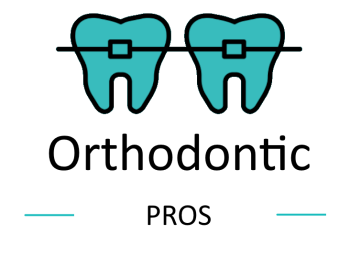Table of Contents
 Clear braces are the perfect choice if you’re looking for a subtle and inconspicuous way to straighten your teeth. Made from transparent materials, clear braces provide a nearly invisible orthodontic solution. With these discreet aligners, you can achieve a beautifully aligned smile while avoiding the noticeable appearance of traditional metal braces. Say goodbye to self-consciousness and hello to a confident, transformed smile with clear braces.
Clear braces are the perfect choice if you’re looking for a subtle and inconspicuous way to straighten your teeth. Made from transparent materials, clear braces provide a nearly invisible orthodontic solution. With these discreet aligners, you can achieve a beautifully aligned smile while avoiding the noticeable appearance of traditional metal braces. Say goodbye to self-consciousness and hello to a confident, transformed smile with clear braces.
Similar to traditional braces, clear braces address issues such as crowded and crooked teeth and jaws. However, what sets clear braces apart is their use of translucent or tooth-colored brackets. These brackets offer a discreet and less noticeable alternative to traditional metal braces, allowing you to undergo orthodontic treatment while maintaining a more natural appearance.
What are Clear Braces?
Historically, metallic braces have been the conventional choice for correcting orthodontic issues in children and teenagers. The earliest models are now nick-named “metal-mouth” braces.
Thanks to advancements in dentistry and supporting technologies, the current generation of metallic braces has significantly evolved. These braces can appear delicate and inconspicuous on specific individuals, enhancing the overall aesthetic appeal. Interestingly, dental braces are often seen as a symbol of prosperity and status in less affluent societies. However, in more developed countries, the visibility of metallic braces is typically perceived as a cosmetic drawback, as it can make the wearer feel self-conscious or stand out in a crowd.
In response to this growing preference, the orthodontic industry has introduced a range of options to minimize braces’ visibility. While these alternatives may come at a higher cost, pursuing enhanced aesthetics is a worthwhile investment for many individuals. The most noticeable components of braces are typically the metallic archwire that runs along the front of the teeth and the row of brackets on each tooth. The archwire needs to retain its metallic composition to ensure strength, acting as the backbone of the braces. However, advancements allow for color-coated wires that can blend with the natural color of teeth and braces, further reducing their visibility.
To secure the archwire to the brackets, colored or stock elastic bands are used. The brackets are made of ceramic, specifically aluminum oxide, giving rise to their alternative name: ceramic braces. Additionally, the elastic bands that hold the brackets in place can be made transparent or tooth-colored, further enhancing the discreet appearance of the braces.
How do Clear Ceramic Braces Work?
The function of braces remains consistent regardless of whether they are traditional wire braces or ceramic braces. At the core of the braces is the archwire, which spans the length of the jaw and applies corrective force to the teeth. Even in ceramic braces, this archwire is typically made of metal, often stainless steel, although it may appear tooth-colored, frosted, or silver. The archwire exerts pressure on the teeth by interacting with ceramic brackets attached to each tooth. These brackets can be bonded directly to the teeth or secured using orthodontic bands, and they are connected to the archwire using tooth-colored elastic bands.
The archwire exerts controlled pressure on the brackets, which transmits this force to the teeth. The orthodontist carefully adjusts the pressure to ensure a gradual and painless movement of the teeth in the desired direction. As the teeth gradually shift, the pressure is released, and the archwire requires periodic readjustment to continue the progress. These adjustments typically occur monthly or fortnightly during visits to the dentist’s office. The duration of the treatment varies depending on the severity of the case and the patient’s age, lasting anywhere from one to four years. Once the braces have achieved the desired tooth alignment, the oral surgeon may recommend using plastic retainers or tooth guards for a certain period to maintain the results.
Some Clear Braces Brackets manufacturers
-
3M Oral Care
-
GC Orthodontics
-
G&H Orthodontics
Clear Braces Adults
Clear braces are an excellent choice for adults seeking dental braces, particularly those concerned about traditional metal braces’ conspicuousness. These braces feature small, translucent brackets designed to seamlessly blend with the natural color of your teeth, making them virtually invisible. Not only do they provide a discreet appearance, but they also offer enhanced comfort during treatment.
Clear Braces Kids
Many children and teenagers opt for this type of braces due to its flexibility in terms of appearance. They can have the braces blend with their tooth color, making them nearly invisible. Alternatively, they can add colorful ligatures or bands to match their clothing or reflect their mood. Despite their aesthetic customization, these braces are durable and suitable for correcting bite issues.
What orthodontic problems can braces with clear brackets treat?
FAQ
Are clear braces slower in achieving results?
Clear braces follow a similar treatment timeline as metal braces when correcting mild to moderate orthodontic issues. If you have any questions about the process, we encourage you to schedule an appointment where we can address your concerns.
Will clear braces cause discomfort?
The placement of clear braces should not cause significant discomfort. However, if you have ceramic or plastic brackets bonded to your teeth, adjustments may be required, resulting in temporary soreness. Additionally, the wires may occasionally rub against the inside of your mouth, causing some temporary discomfort. Rest assured, our dental office will prioritize your comfort throughout the treatment process.
Do clear braces become yellow?
High-quality clear braces do not discolor over time. However, if low-quality materials are used, discoloration is possible. Additionally, the clear elastic ties used with clear braces may turn yellow over time, affecting the appearance of the braces. Fortunately, these removable ties can be changed at each appointment to maintain the desired aesthetic.

